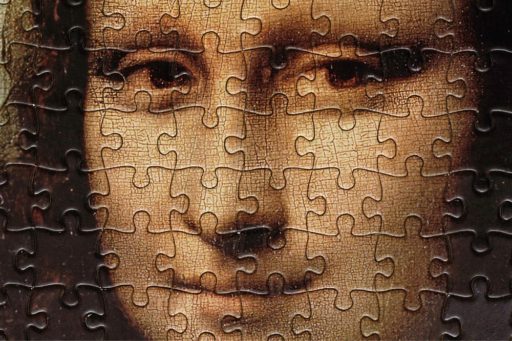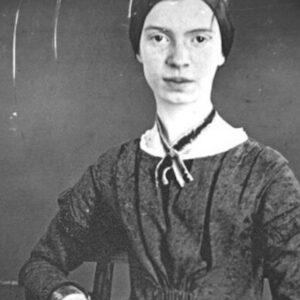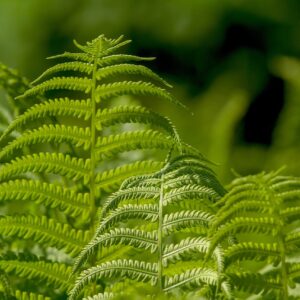The triadic relationship between poet, poem, and muse comes without guarantee. A passing observation or merest whisper of a phrase can lead to a successful end, while an idea that seems to emerge like Athena from Zeus’s forehead may soon wither and die. Most poets take each inspiration as it comes, following the scent of what’s given in search of a surprising and fitting wholeness. Some hunts prove blessedly brief. Other poems evolve in sporadic leaps and desultory interludes, perhaps needing to be put aside for a time, pending fresh eyes. As a poem assumes its form, a serious poet repeatedly interrogates every word, line, and break for nuance and effect until the entire consort plays in harmony. The challenge is knowing when to stop. W. H. Auden, who went on tinkering with poems long after they’d been published, paraphrased one of Paul Valéry’s wry aphorisms about the craft as, “A poem is never finished, only abandoned.” And then it’s on to whatever’s next.
If these individual poems are later gathered into a collection, the poet, her editor, and one hopes her eventual reader look for an often implicit commonality that unifies, however tenuously, the parts into something like an integral whole. Certain collections, whether by circumstance or design, feel more of a piece than others. Intentional unities take many forms, spanning poetic styles and schools: Edgar Lee Masters’s Spoon River Anthology, Mary Szybist’s Incarnadine, or Micheal O’Siadhail’s Five Quintets. Less premeditated unities typically reflect the poet’s particular interests, abiding questions, and gnawing obsessions. Even the finest poets revisit the same themes and subjects again and again, gesturing from yet another angle toward mysteries that lie beyond words.
Recent encounters with three very different poetry volumes set me to thinking about what makes for a satisfying whole. Angela Alaimo O’Donnell’s Love in the Time of Coronavirus: A Pandemic Pilgrimage (Paraclete Press, 2021) may be the most intentionally unified of the three. Written over the course of a year (March 22, 2020 – March 22, 2021), these poems render and reflect upon the poet’s experience of the COVID pandemic from lockdown to this past spring’s lightening of restrictions. Chronicling a pilgrimage through time rather than space, O’Donnell depicts moments of sickness, anxiety, grief, social isolation, dreams deferred, and creative coping. Accordingly, the individual poems assume varying forms and tones, linked together as the poet’s experience. Given how quickly these poems went to press, they offer snapshots rather than portraits, unshowy glimpses of life less likely to evoke responses of “Ah, how exquisite!” than “That’s just how it was.” There’s a relaxed formality to O’Donnell’s work, as in the conclusion of her sonnet, “Wherein We Realize This Is Not Temporary”:
…and we have arrived where we did not want to go.
We want to return to our city of love.
Our sweet celebrations all we think of
these days of lockdown and lonely exile.
They tell us it won’t last. It’s just for a while.
But we know better. The train’s on the track.
It only runs forward. We’ll never get back.
There will no doubt be more COVID collections forthcoming from other poets. Some, perhaps, may prove more definitive, but this volume marks a promising start.
The three science-themed poem sequences gathered in Katrina Porteous’s collection, Edge (Bloodaxe Books, 2019), were written in collaboration with the electronic composer, Peter Zinovieff, for public performance at a British planetarium. Born in Scotland, Porteous has previously mapped the landscape and language of the rugged Northumbrian coast in poetry, prose, and radio broadcasts. Her attention to natural detail, lively imagery, and keen ear for poetic music ground her new work, whose ostensible subject matter – quantum fields, the physics of the sun, and the moons of various planets – could easily drift loose from everyday experience, losing itself in heady abstraction. One doesn’t need a PhD in physics to enjoy these jargon-free poems, just a fondness for well-chosen words and an openness to the mind-blowing implications of contemporary scientific discovery. In describing the dynamic equilibrium of our sun – a celestial object bewilderingly massive and dangerous even to look at – Porteous uses plain, luscious, and human-scaled language:
Imagine a thing with two hearts
A slow, formal dance
Taking place inside it.
IntimateAnd alike, two pairs of dancers
Slowly moving closer, step
By step, heartbeat by heartbeat.
I highly recommend an online video of this and other poems from Porteous’s Sun sequence for those wanting to hear her compelling work in performance. Unified by theme and occasion, these poems plunge the reader into the deep realities of this universe we inhabit.
In another example of the fertile interplay of science and poetry, Mary Peelen’s delightful debut collection, Quantum Heresies (Glass Lyre Press, 2019), turns to the language of physics and mathematics in search of patterns and meaning in a confusing and chaotic world. Bristling with wit and pulsing with the excitement that accompanies the discovery of unforeseen connections, Peelen’s poems wrestle with star clusters and cancer cells, the baffling mysteries of quantum interaction and an ineffable divine, the beauty of a soluble equation and the enduring power of unanswerable questions. Her disciplined pursuit of symmetry is realized on the page in a frequently recurring format of ten unrhymed couplets, affording rich, focused reflections on matters as diverse as gravity or a garden hose. Peelen elsewhere reveals that this ten-couplet structure – at once frugal and flexible – began with her first poem, simply entitled “x,” as in the variable within an algebraic equation. Many of the poems that follow, then, enter a different thematic or subjective value for that variable, resulting in a new and surprising solution. For those of us who struggle with mathematics, the effect hints at what scientists might mean when they call an equation “beautiful.”
It helps to be at least passingly familiar with the science of chaos and complexity or the implications of string theory, but Peelen’s precise, ravishing language will, I think, seduce the mathematically disinclined and the quantum neophyte. Here’s but a taste from her meditation on hidden dimensions, global climate change, and the love of beauty:
Coiled as secrets inside a marriage,
the earth has interior shapebound into a space so small
it unites electromagnetism and gravity.No place for resentment or annoyance,
lies grow white and disappear.I water the roses and the artichoke,
extravagant, lavender, needier than it looks.Here at the horizon of theoretical extinction,
we cut flowers for the table.We sing the way weary mourners do,
praising geometry as if miracles could happen.
Though this is Peelen’s first and as yet only poetry collection, there’s a maturity here that merits serious attention. As Augustine once heard while sitting in a garden, “Take and read.”
There are many ways, of course, to gather written work into a proper wholeness, few of them settled on from the beginning. As Neil Gaiman wryly notes, “The purpose of the second draft is to make it look like you knew what you were doing all along.” The journey from inspiration to finished work is riddled with false paths and surprising accidents. Therein lies the adventure.
Brian Volck is a pediatrician and writer living in Baltimore. He is the author of a poetry collection, Flesh Becomes Word, and a memoir, Attending Others: A Doctor’s Education in Bodies and Words. His website is Brianvolck.com





